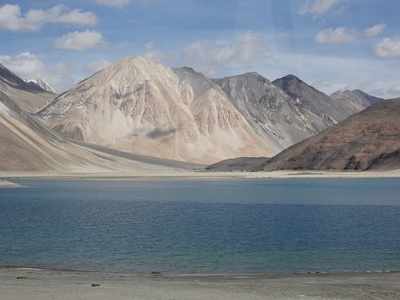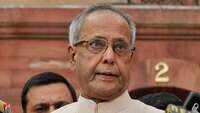LAC face-off: India troops thwart new Chinese bid to change status quo on southern bank of Pangong Tso

NEW DELHI: In further escalation in the ongoing military confrontation in eastern Ladakh since early-May, Indian troops thwarted an attempt by Chinese troops to unilaterally change the status quo on the southern bank of Pangong Tso on Saturday night.
The “provocative military movements” by the People’s Liberation Army (PLA) were physically blocked by the swift movement of Indian troops into the area, with adequate force-levels and equipment being deployed in place by Sunday morning.
“Our soldiers foreclosed the move by the PLA to change the realities on the ground by intruding into our territory on the southern bank of Pangong Tso. There was no violent clash between the rival troops as such. So, there is no question of casualties,” said an officer.
There is no official word as yet on the brigade commander-level flag meeting being held between the two armies at Chushul on Monday morning to resolve the issue.
An Army statement earlier in the day said, “The PLA violated the previous consensus arrived at during military and diplomatic engagements during the ongoing standoff in eastern Ladakh and carried out provocative military movements to change the status quo.”
Follow TOI's live blog for latest updates on India-China LAC face off
“Indian troops pre-empted this PLA activity on the southern bank of Pangong Tso Lake, undertook measures to strengthen our positions and thwart Chinese intentions to unilaterally change facts on ground. The Indian Army is committed to maintaining peace and tranquility through dialogue, but is also equally determined to protect its territorial integrity,” it added.
The PLA move on Saturday night comes after it had earlier reneged on the dismantling one of its observation posts near Patrolling Point-14 in the Galwan Valley, which led to the extended violent skirmish in which 16 Bihar commanding officer Col Santosh Babu and 19 other Indian soldiers were killed on June 15. China has kept silent about the number of its casualties.
The ongoing military confrontation between India and China in eastern Ladakh will enter the fifth month this week. Several rounds of diplomatic and military talks have so far failed to break the deadlock in the stalled troop disengagement in Pangong Tso and Gogra as well as de-escalation in the rival military build-ups in the strategically-located Depsang Plains-Daulat Beg Oldie (DBO) sector, as was reported by TOI earlier.
The PLA has refused to withdraw eastwards from the 8-km stretch it has occupied from `Finger-4’ to `Finger-8’ (mountainous spurs jutting into the lake) after building scores of new fortifications and gun positions on the northern bank of Pangong Tso since early-May.
China has shown no intent of disengaging from the troop confrontation, and has further dug in its heels by continuing to build roads, bridges, helipads and other military infrastructure along the Line of Actual Control (LAC) to back its troops at the actual face-off sites.
The infrastructure development by the PLA ranges from building roads, lateral links, bridges and helipads in several sectors close to the LAC to laying optical fibre cables for its troops at the face-off sites in Pangong Tso and Gogra-Hot Springs, while also augmenting its airbases at Hotan and Kashgar in Xinjiang as well as Gargunsa, Lhasa-Gonggar and Shigatse in Tibet, as was earlier reported by TOI.
India, of course, has matched the PLA troop build-up and deployment of tanks, artillery, surface-to-air missile batteries and other heavy weaponry in all the three sectors of the 3,488-km LAC stretching from Ladakh to Arunachal Pradesh.
In Video:LAC face-off: Fresh clashes erupted between Indian, Chinese troops at Pangong Tso
The “provocative military movements” by the People’s Liberation Army (PLA) were physically blocked by the swift movement of Indian troops into the area, with adequate force-levels and equipment being deployed in place by Sunday morning.
“Our soldiers foreclosed the move by the PLA to change the realities on the ground by intruding into our territory on the southern bank of Pangong Tso. There was no violent clash between the rival troops as such. So, there is no question of casualties,” said an officer.
There is no official word as yet on the brigade commander-level flag meeting being held between the two armies at Chushul on Monday morning to resolve the issue.
An Army statement earlier in the day said, “The PLA violated the previous consensus arrived at during military and diplomatic engagements during the ongoing standoff in eastern Ladakh and carried out provocative military movements to change the status quo.”
Follow TOI's live blog for latest updates on India-China LAC face off
“Indian troops pre-empted this PLA activity on the southern bank of Pangong Tso Lake, undertook measures to strengthen our positions and thwart Chinese intentions to unilaterally change facts on ground. The Indian Army is committed to maintaining peace and tranquility through dialogue, but is also equally determined to protect its territorial integrity,” it added.
The PLA move on Saturday night comes after it had earlier reneged on the dismantling one of its observation posts near Patrolling Point-14 in the Galwan Valley, which led to the extended violent skirmish in which 16 Bihar commanding officer Col Santosh Babu and 19 other Indian soldiers were killed on June 15. China has kept silent about the number of its casualties.
The ongoing military confrontation between India and China in eastern Ladakh will enter the fifth month this week. Several rounds of diplomatic and military talks have so far failed to break the deadlock in the stalled troop disengagement in Pangong Tso and Gogra as well as de-escalation in the rival military build-ups in the strategically-located Depsang Plains-Daulat Beg Oldie (DBO) sector, as was reported by TOI earlier.
The PLA has refused to withdraw eastwards from the 8-km stretch it has occupied from `Finger-4’ to `Finger-8’ (mountainous spurs jutting into the lake) after building scores of new fortifications and gun positions on the northern bank of Pangong Tso since early-May.
China has shown no intent of disengaging from the troop confrontation, and has further dug in its heels by continuing to build roads, bridges, helipads and other military infrastructure along the Line of Actual Control (LAC) to back its troops at the actual face-off sites.
The infrastructure development by the PLA ranges from building roads, lateral links, bridges and helipads in several sectors close to the LAC to laying optical fibre cables for its troops at the face-off sites in Pangong Tso and Gogra-Hot Springs, while also augmenting its airbases at Hotan and Kashgar in Xinjiang as well as Gargunsa, Lhasa-Gonggar and Shigatse in Tibet, as was earlier reported by TOI.
India, of course, has matched the PLA troop build-up and deployment of tanks, artillery, surface-to-air missile batteries and other heavy weaponry in all the three sectors of the 3,488-km LAC stretching from Ladakh to Arunachal Pradesh.
In Video:LAC face-off: Fresh clashes erupted between Indian, Chinese troops at Pangong Tso
Download
The Times of India News App for Latest India News

Coronavirus outbreak
Trending Topics
LATEST VIDEOS
India
 Decline in medical condition of former President Pranab Mukherjee: Army hospital
Decline in medical condition of former President Pranab Mukherjee: Army hospital  India’s COVID tally crosses 36 lakh mark
India’s COVID tally crosses 36 lakh mark  Vehicles damaged after wall collapsed in Bhopal
Vehicles damaged after wall collapsed in Bhopal  SC fines Prashant Bhushan one rupee for contempt of court
SC fines Prashant Bhushan one rupee for contempt of court  MP CM Shivraj Chouhan announces free transport services for NEET/JEE candidates
MP CM Shivraj Chouhan announces free transport services for NEET/JEE candidates  Odisha floods: Fire service team rescues woman and her newborn in Nayagarh
Odisha floods: Fire service team rescues woman and her newborn in Nayagarh
More from TOI
Navbharat Times
Featured Today in Travel
Quick Links
Coronavirus in MumbaiCoronavirus in KolkataCoronavirus in HyderabadCoronavirus in DelhiCoronavirus in BangaloreCoronavirus symptomsCoronavirus in IndiaWhat is CoronavirusCoronavirus NewsSolar EclipseNPRWhat is NRCCAB BillCAB and NRCRTI BillPodcast newsLok SabhaShiv SenaYSRCPCongressBJP newsUIDAIIndian ArmyISRO newsSupreme Court
Get the app



